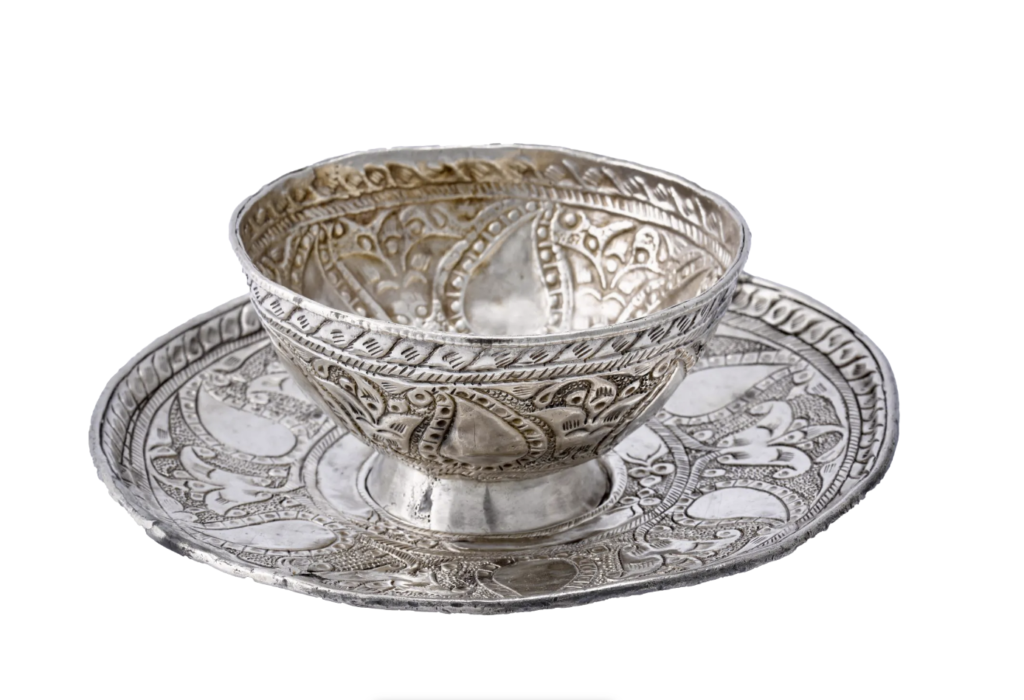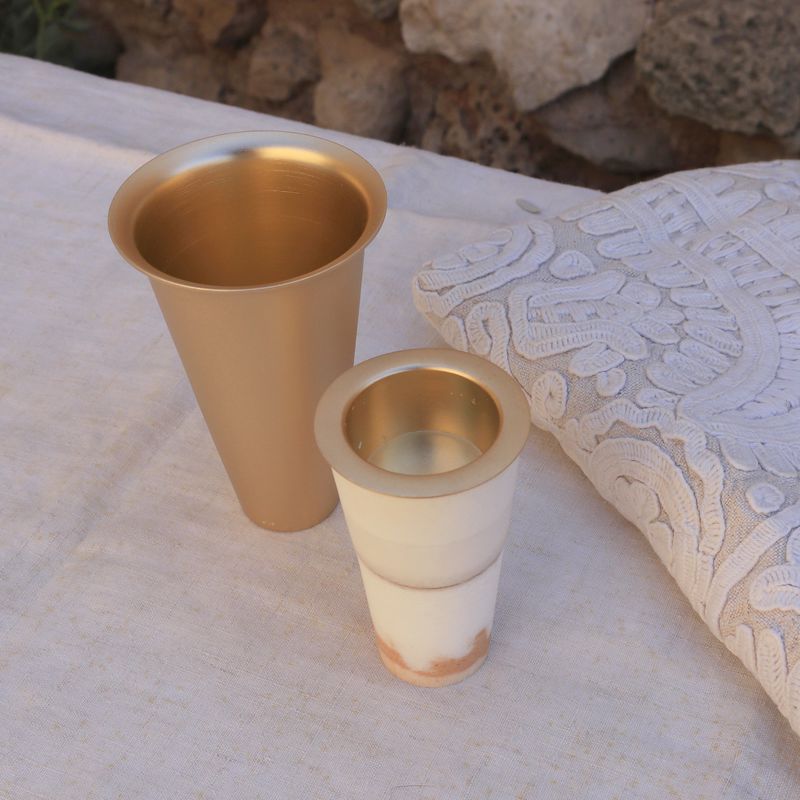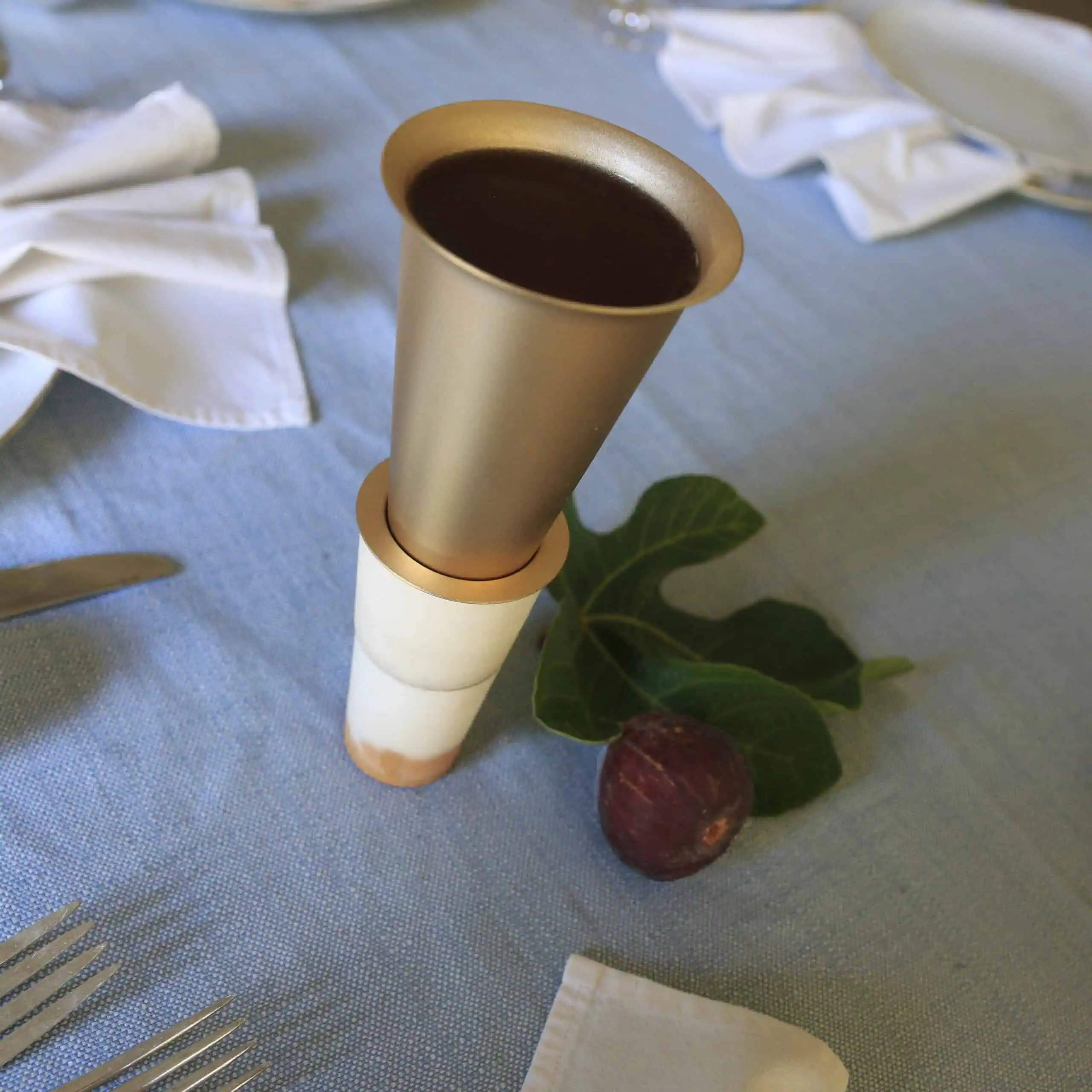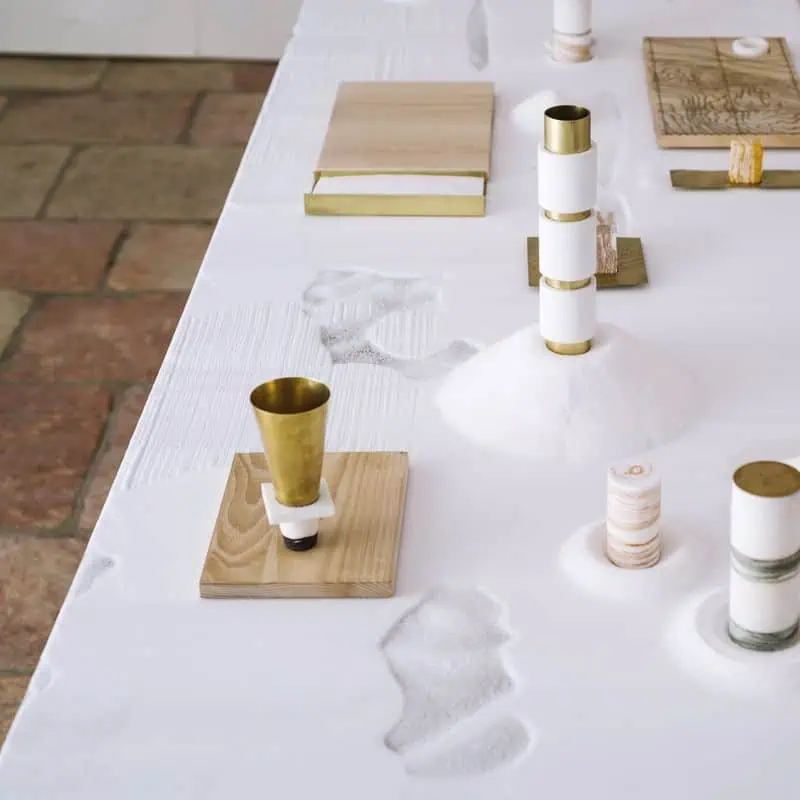Between Shabbat Kiddush Cup, Elijah Cup and Miriam Cup
Table of Contents
The Evolution of the Kiddush Cup in Judaica Art
The Kiddush cup is an essential part of Shabbat and Jewish holiday rituals. In the different diaspora cultures, Kiddush cups have been designed with local aesthetics and artistic styles in mind. Sephardic communities often created cups with elegant, minimalist lines, while Ashkenazi communities emphasized rich engravings and intricate patterns, frequently influenced by Gothic and Baroque art.
These cups served not only as religious objects but also as symbols of prestige and status. They were crafted from precious materials such as silver and gold, often adorned with engravings of biblical verses, the names of the household, and creation dates, transforming them into historical keepsakes.

The Symbolism of Elijah’s Cup and Its Role in the Passover Seder
Elijah’s cup is a unique addition to the Passover Seder, symbolizing the belief in the prophet Elijah’s role as the harbinger of redemption. Over the generations, this cup has become a symbol of anticipation and hope, with Jewish art offering various interpretations.
In the 18th and 19th centuries, Elijah’s cups began to be crafted with elaborate designs, featuring engravings of Jerusalem landscapes, symbols of redemption, and verses related to Elijah. These cups were often made in especially large sizes to emphasize their significance and central placement on the holiday table.
The wine poured into Elijah’s cup is traditionally not consumed, reflecting the belief that it awaits the prophet’s arrival. His appearance would signal the time to drink the fifth cup, marking complete redemption. The cup is usually kept covered until morning, after which the wine is returned to the bottle and used for the day’s Kiddush.

The Symbolism of Miriam’s Cup: Feminism and Reform Judaism
In the late 20th century, with the rise of feminist movements and their influence on Reform and Conservative Judaism, a new cup appeared on the Seder table—Miriam’s cup. Dedicated to the memory of the prophetess Miriam, it symbolizes the role of Jewish women and their growing presence in tradition and Jewish society.
Miriam’s cup is filled with water, representing Miriam’s Well—the source of water that accompanied the Israelites in the desert thanks to her merit. It invites reflection on gender equality, renewal, and the centrality of values such as compassion and community care.
Artistic designs of Miriam’s cups often incorporate elements that emphasize flow, life, and femininity.
The Cultural and Spiritual Meaning of Kiddush, Elijah, and Miriam’s Cups
The Kiddush cup, Elijah’s cup, and Miriam’s cup are far more than utilitarian objects. They embody Jewish history and culture, showcasing how art serves as a vessel for transmitting tradition while adapting to the spirit of the times.
While Elijah’s cup reflects the anticipation of redemption, Miriam’s cup symbolizes progress, equality, and gratitude for the central role of women in Judaism. The inclusion of Miriam’s cup in the Passover Seder highlights the influence of modern movements on Judaism, offering a renewed perspective on tradition that blends the old with the new. Together, these cups create a rich mosaic of faith, art, and symbolism that continues to evolve to this day.

Elijah’s and Miriam’s Cups by SaltwareDesign
I named the Kiddush cup “Oshiya”—a Hebrew word meaning foundation, base, or cornerstone. Metaphorically, this term describes an influential figure within a particular field. The cup is designed with a base made of salt combined with earth pigment powder, and a separate upper part for pouring wine.
The combination of these two cups in gold and silver hues is especially fitting for the Passover Seder and a festive, special table.
Table of Contents

A Unique Hanukkah Menorah Gift

Salt -The Culture Story


